A look at my work in an unfamiliar medium: a sprawling museum space.
How do I tell the story of a century-old rodeo in a museum exhibit? That was the challenge when the Oregon Historical Society hired me to curate an exhibit about the Pendleton Round-Up, one of the world’s best-known western celebrations. It’s a story-telling form that relies less on words and more on artifacts and other objects artfully presented as a cohesive, mostly visual narrative. At the time, I had many years of experience working with words and doing the research that produces compelling stories. But I had no experience searching for artifacts or persuading their far-flung owners to loan them. Securing loans from more than forty people and organizations, while tedious, proved rewarding in both quantity and quality. Equally rewarding were the lenders’s generosity and interest in making sure the Round-Up story was well told.
My foot in the door with the lenders was my deep knowledge of the Round-Up as co-author of a book about its colorful history. That knowledge also helped me compile a story appropriate for this then-unfamiliar medium of large museum exhibition space. Writing with much more brevity than usual recalled my early years in the newspaper business, especially when composing the “tight and bright” labels and captions accompanying the hundreds of artifacts, photos, and memorabilia that I eventually tracked down.
My job, in a sense, was providing the raw materials and textual story framework that collaborators highly skilled in exhibition work built upon in shaping a dramatic visual journey through time. Below are examples of the thousands of words I wrote.
Written for a large display panel illustrating how the first Round-Up came about:
By horseback, wagon, train, and car, people from near and far flooded Pendleton. A cavalcade of Indians arrived in a cloud of dust and set up a teepee encampment in cottonwoods along the Umatilla River. Residents opened their homes to strangers. Stores and banks closed at noon on opening day, September 29, 1910. Seven thousand spectators jammed the arena, and hundreds were turned away. Four thousand more bleacher seats were built overnight. At least one thousand more people turned out on each of the final two days for the last of twenty-three events, the Westward Ho! Parade and Indian dances. The slogan, “Let ’er Buck!” called out from countless lips.
Two of dozens of photo captions:
In a poignant moment in the Happy Canyon pageant, a lone rider played by Ray McDonald carries not just a torch but also a weighty responsibility: he must warn his people that white settlers are headed to their lands, a migration that will change everything. Gary Ogilvie photograph, 2007.
Determined and fiery by nature, Lee Caldwell won at least a dozen rodeo titles from 1914 to 1916 in the United States and Canada. Little did he know that greater challenges and danger awaited him on World War I battlefields. Photograph, 1915, courtesy Howdyshell Collection.
Labels for artifacts and objects included:
Bass drum, Fletcher Family and Round-Up Jazz Band, ca. 1910s. Loaned by Jim Swearingen
Deerskin with Round-Up scene, ca. 1910s. Loaned by Sally Geissel
Statue, “Buffalo Chase,” 1917. A. Phimister Proctor, sculptor. Model, Round-Up cowboy Jackson Sundown. From A. Phimister Proctor Museum, Anacortes, Washington, on loan from Peggy Ann Smith
Chaps, John Spain. Loaned by Kelton Spain, grand-nephew of John and Fred Spain

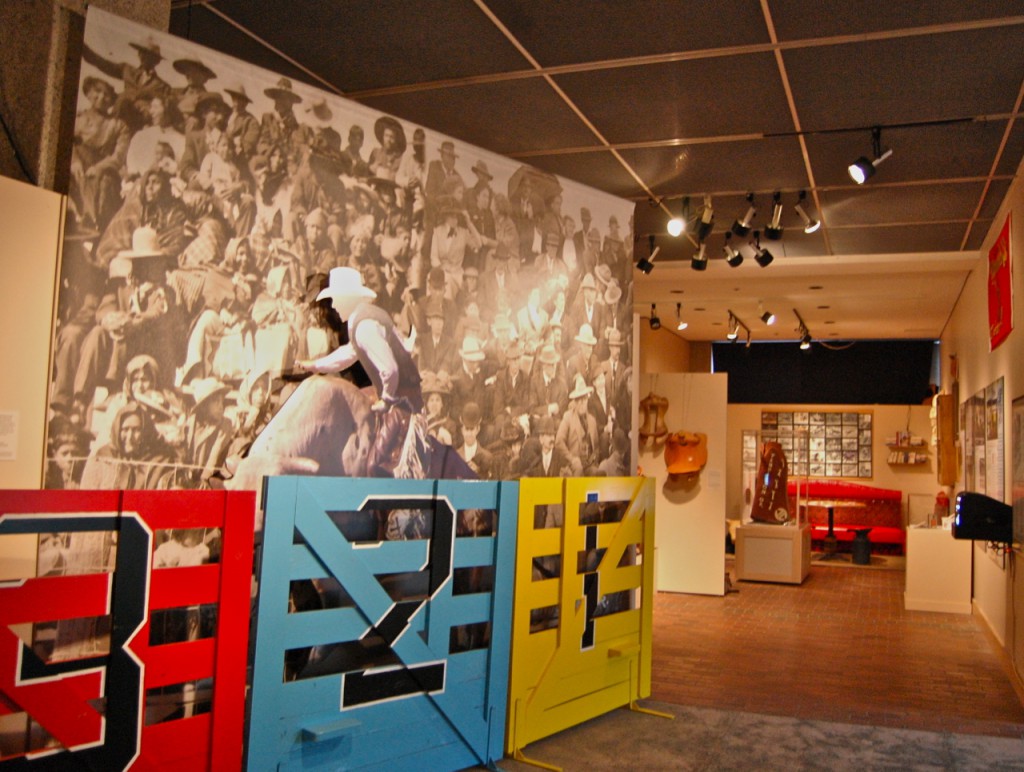
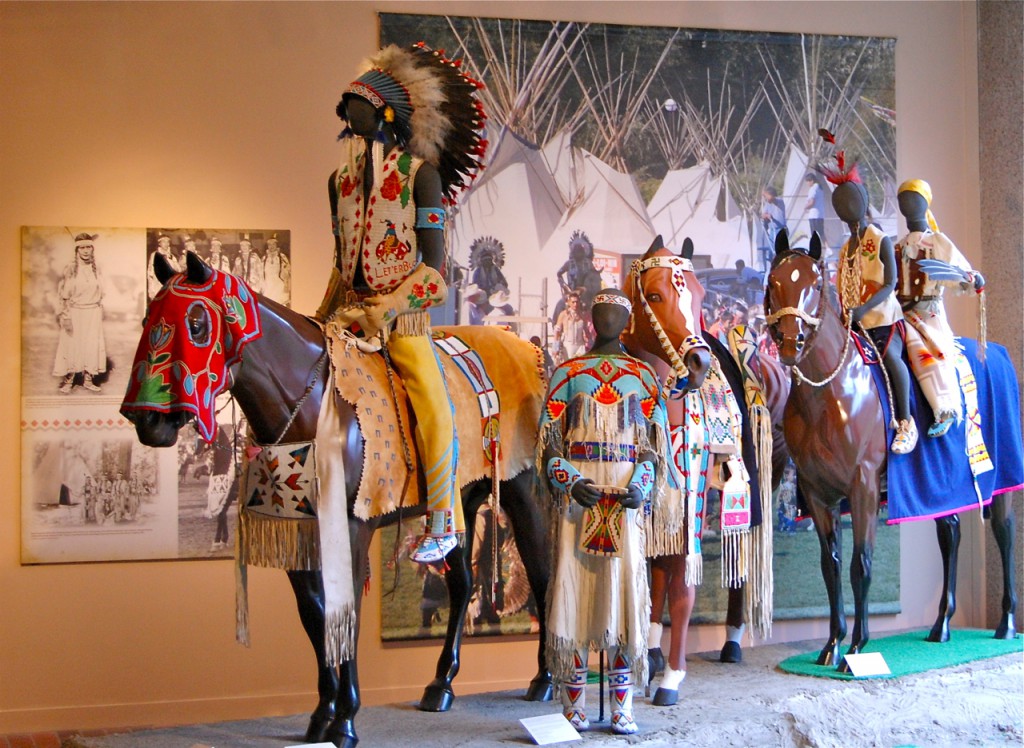
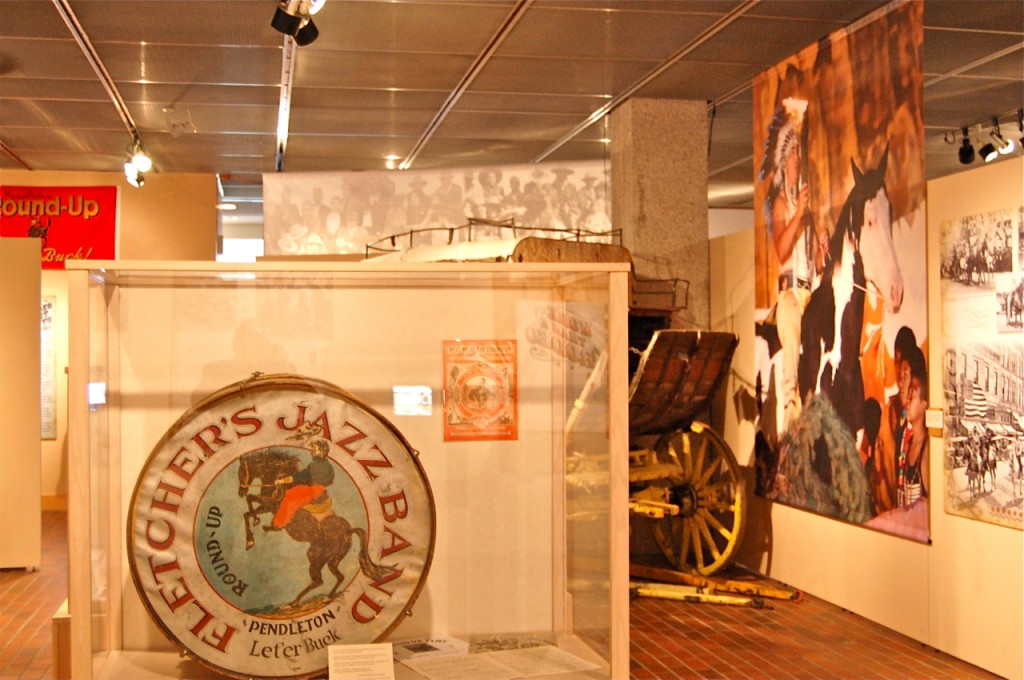
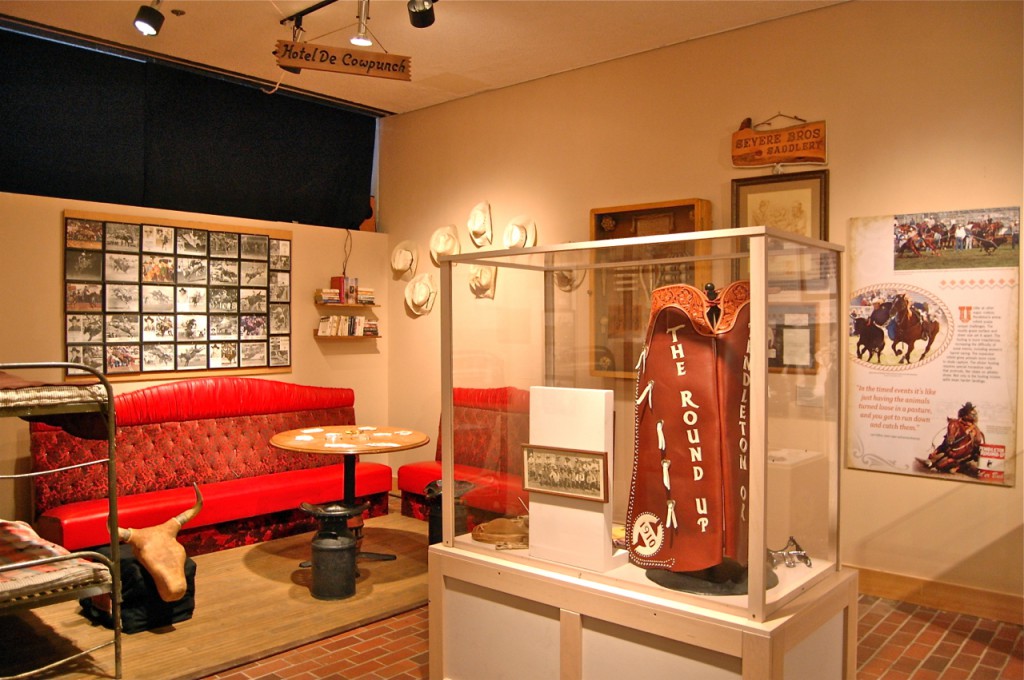
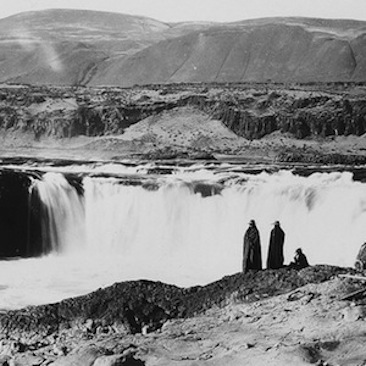
Comments on this entry are closed.